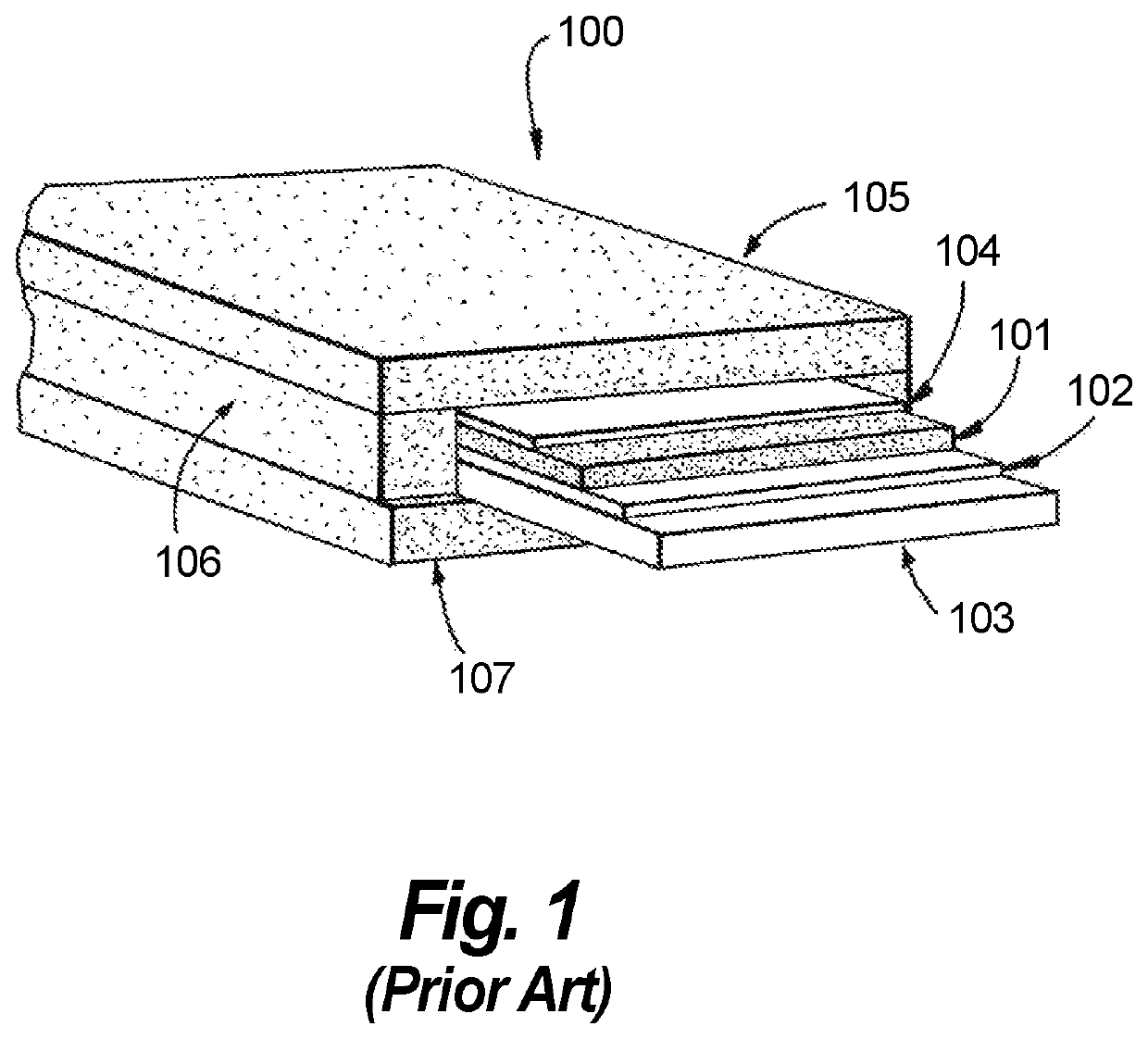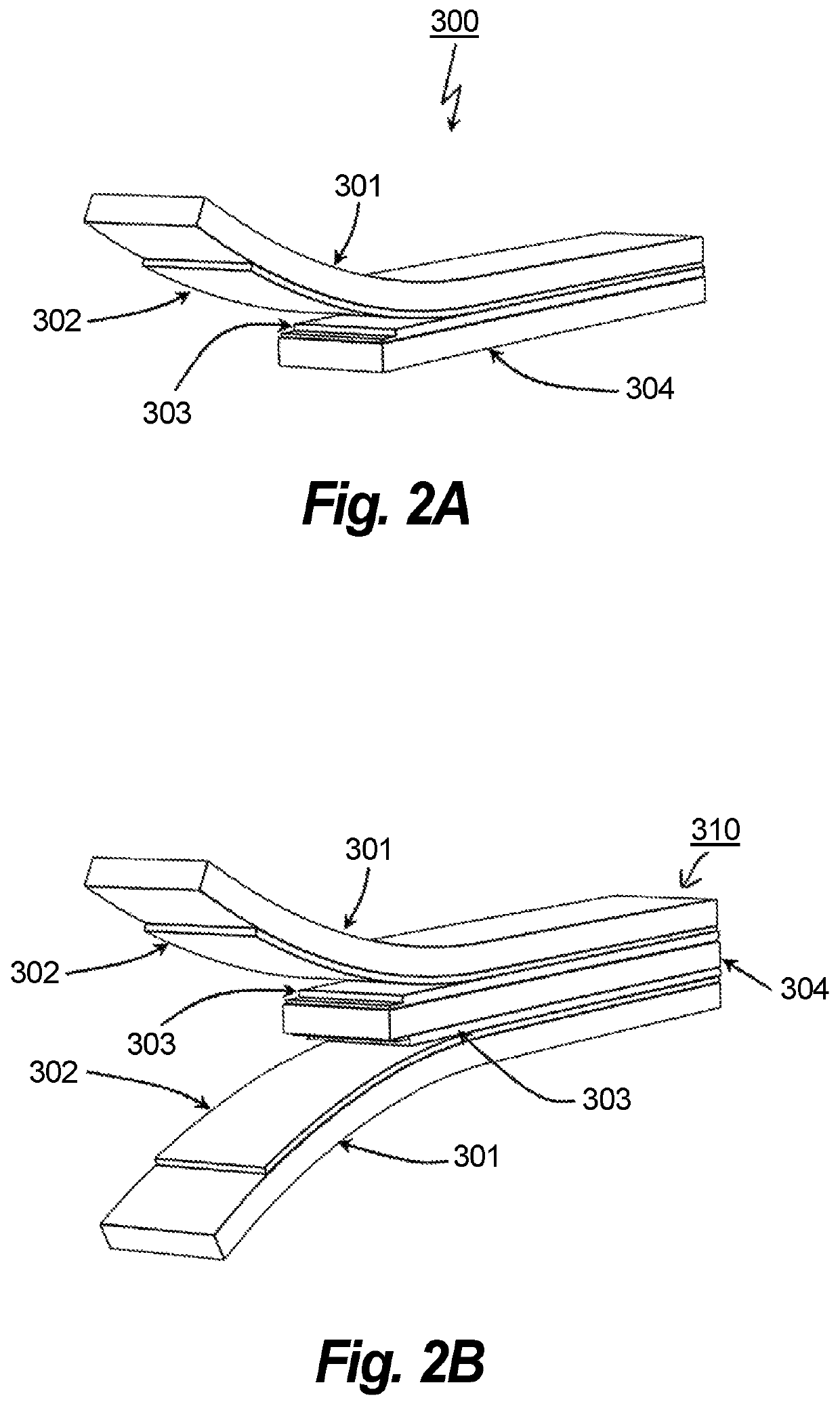Reel-to-reel exfoliation and processing of second generation superconductors
a superconductors and reel-to-reel technology, applied in the direction of superconducting magnets/coils, magnetic bodies, conductors, etc., can solve the problems of loss of magnetization (ac) and the architecture of 2g tape does not allow for simple splicing of multi-strand cables, so as to reduce the loss of magnetization of the cable
- Summary
- Abstract
- Description
- Claims
- Application Information
AI Technical Summary
Benefits of technology
Problems solved by technology
Method used
Image
Examples
Embodiment Construction
>A partially exfoliated second generation (2G) wire, i.e., tape 300 is shown in FIG. 2A. Tape 300 is preferably on the order of 100-1000 meters long and 1-100 mm wide. Tape 300 includes a metal substrate 301, a buffer layer 302, a superconducting layer 303, and a stabilizing metal layer 304. The stabilizer layer 304 can be made of copper, stainless steel, bonze or another conductive metal. In a preferred embodiment, the tape is subjected to an external action, which increases the stress level between the superconducting layer 303 and the buffer layer 302. This external action can be accomplished by, for example, rapid heating by an external source, such as an inductive coil, infrared radiation or radio-frequency radiation. The external action can also be accomplished by a mechanical deformation of the tape, such as bending. The stress level is preferably raised to a level where the substrate 301 and the buffer layer 302 can be mechanically separated from the superconducting layer 30...
PUM
| Property | Measurement | Unit |
|---|---|---|
| separation angle | aaaaa | aaaaa |
| frequency | aaaaa | aaaaa |
| pressure | aaaaa | aaaaa |
Abstract
Description
Claims
Application Information
 Login to View More
Login to View More - R&D
- Intellectual Property
- Life Sciences
- Materials
- Tech Scout
- Unparalleled Data Quality
- Higher Quality Content
- 60% Fewer Hallucinations
Browse by: Latest US Patents, China's latest patents, Technical Efficacy Thesaurus, Application Domain, Technology Topic, Popular Technical Reports.
© 2025 PatSnap. All rights reserved.Legal|Privacy policy|Modern Slavery Act Transparency Statement|Sitemap|About US| Contact US: help@patsnap.com



